Frigate birds, also known as Frigatebirds, or just Frigates, are a small group of birds in the Fregatidae. There are five species of Frigate Birds in the family, the Great, Christmas, Magnificent, Ascension, and Lesser Frigate Bird. This group of seagoing birds is best known for the red inflatable pouch on the throat of the males. Read on to learn about the Frigate Bird.
Description of the Frigate Bird
Though there are several different species, Frigate Birds generally look quite similar. Most birds have black plumage, or feathers. Their bills are long and come to a pointed hook at the end. In fact, their beaks are similar to those of pelicans, except that their pouches do not attach to the bottom of their beaks.
Like pelicans, these birds are also quite large, and most individuals are just under four feet long. Their wingspan sometimes surpasses seven feet across.
Interesting Facts About the Frigate Bird
These birds are undeniably interesting looking, particularly the males. Learn more about their odd appearance, and other fun facts, below!
- Gular Pouch – Frigate bird pouches are not like those of pelicans, which use their pouch to hold mouthfuls of fish. Only male frigates have red pouches, known as gular pouches, and they do not use them to hold or store food. Instead, they inflate their pouches to show off to the ladies.
- Sister Species – While frigates are in a family of their own, they are related to some other groups of seabirds. Some of their related families include pelicans, penguins, loons, albatrosses, boobies, gannets, petrels, and shearwaters.
- Close Cousins – Like other species of seabirds, when food calls, everyone comes flapping. This includes other species of birds, like pelicans. It is not unusual for frigates to breed in close proximity to other species of seabirds as well.
- Group Robbery – Not all interactions with other species are quite so harmonious. Sometimes groups of Frigate Birds work together to steal food from other species of birds. The pack of birds work together, pulling the other bird’s tail and feathers, until it finally spits up its meal to escape.
Habitat of the Frigate Bird
While habitat preferences vary from species to species, most frigates live in similar ecosystems. They feed both in the open ocean and waters close to shore.
Like some other types of seabirds, such as albatrosses, unless they are breeding frigates do not frequently come to shore. During the breeding season they build their nests on small islands, usually in mangroves, trees, shrubs, cliffs, or bushes.
Distribution of the Frigate Bird
Each species of Frigate Bird has its own distribution. Some species are more widespread, while others live in small, localized regions. Most species only breed on a few specific islands, and they return to these breeding sites every year.
They live in tropical and subtropical oceans, and the islands and coasts in these areas. Specific ranges vary from species to species, but they inhabit tropical oceans nearly worldwide.
Diet of the Frigate Bird
As seabirds, I’m sure it isn’t difficult to guess what these birds feed on! They eat a variety of fish, squid, crustaceans, and virtually anything that they can snatch up. Their favorite way to catch a meal is to harass other birds until they spit out their hard-earned catch.
Especially during the breeding season, some species focus heavily on just a few types of prey. Frigates also follow fishing vessels and eat the scraps thrown overboard.
Frigate Bird and Human Interaction
Human interaction varies from species to species. Fishermen sometimes kill these birds for fun, or because the birds try to steal fish. Another important threat to these birds is humans hunting their eggs and chicks at their nesting colonies.
Because birds nest in large numbers, humans can make huge impacts on population numbers when they destroy nesting colonies. Feral animals, like cats and rats, also introduced by humans, also kill nesting birds and their young.
Domestication
Humans have not domesticated Frigate Birds in any way.
Does the Frigate Bird Make a Good Pet
Natives on some islands in the Pacific Ocean used to capture young birds and tame them as pets. They even used the pet birds as messengers to deliver letters from one island to another.
However, their lifestyle was quite different from most households today. In modern homes, Frigate Birds would not make good pets. It is also illegal to own a Frigate Bird as a pet in most places.
Frigate Bird Care
In a zoological setting, these birds have needs that are similar to other seabird species. They thrive in enclosures with plenty of flying space, lots of water for them to swim in, and artificial rock formations or vegetation (depending on the species.) Zookeepers feed them a variety of fish and squid, as well as any additional vitamins that their veterinarians recommend.
Behavior of the Frigate Bird
These birds are quite social creatures. Outside of the breeding season they live and forage in small groups known as flocks. These flocks work together to hunt or steal fish from other birds.
During the breeding season multiple flocks congregate on small islands and form large colonies. Some colonies are smaller, while others number in the thousands. Some breeding colonies share their space with other species of seabirds.
Reproduction of the Frigate Bird
The specifics of reproduction vary slightly from species to species. Generally speaking, their reproductive strategies are quite similar. Males use their red gular pouches to perform displays. Once pairs form, they build their nests, either in trees and bushes, or on the sides of cliffs.
Most species lay a single egg, which the female incubates for up to two months. Different species of chicks begin flying at different ages, some fledge at just over four months old, while others do not fledge until they are seven months old. Some species continue to care for their fledged offspring until they are over a year old.

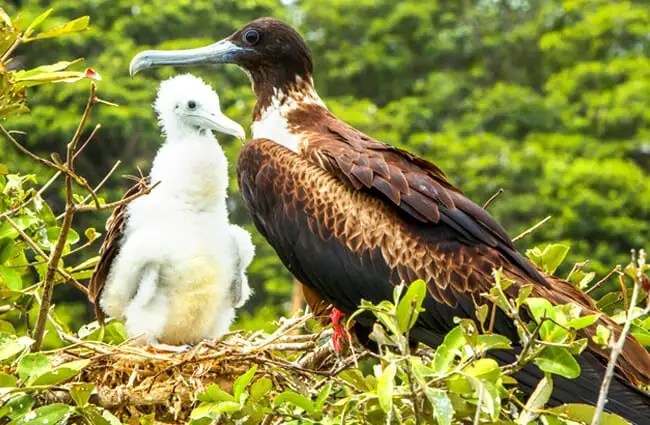
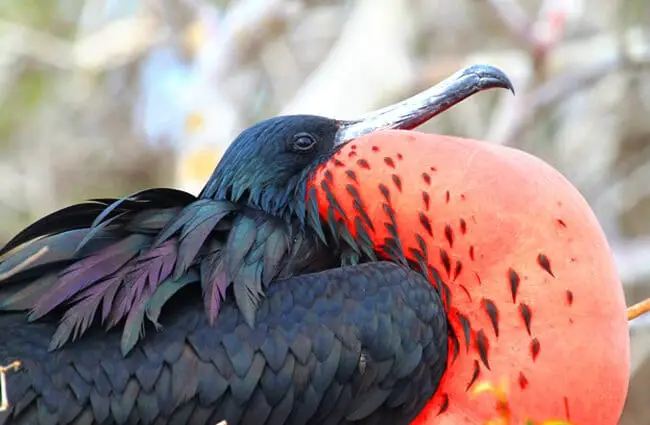
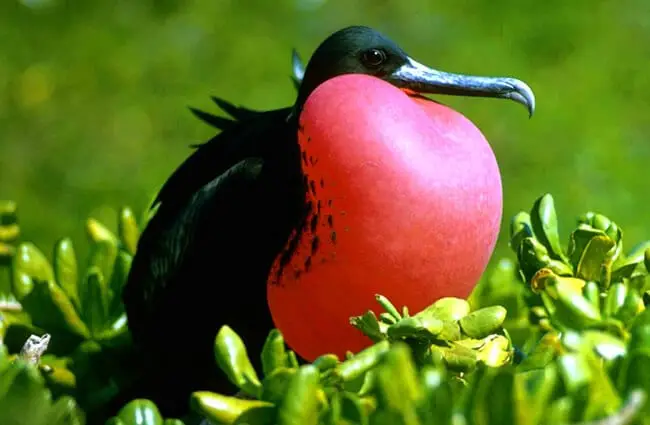
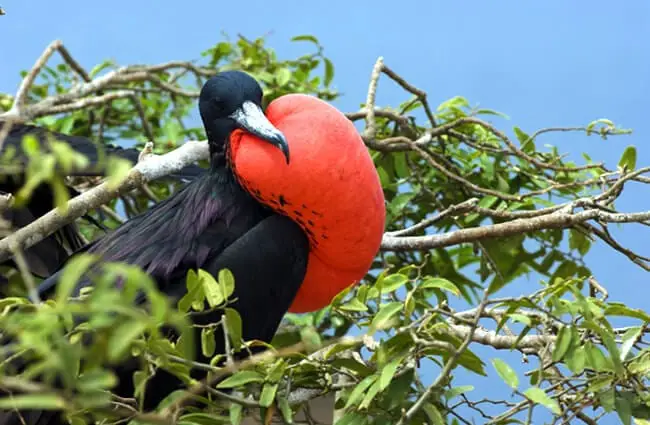

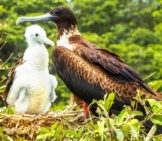
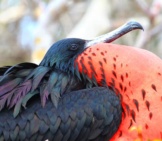
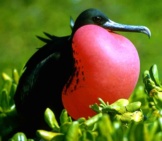
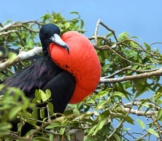
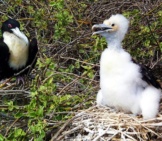
![Red Angus Closeup of a beautiful Red Angus cowPhoto by: U.S. Department of Agriculture [pubic domain]https://creativecommons.org/licenses/by/2.0/](https://animals.net/wp-content/uploads/2020/03/Red-Angus-4-238x178.jpg)




![Red Angus Closeup of a beautiful Red Angus cowPhoto by: U.S. Department of Agriculture [pubic domain]https://creativecommons.org/licenses/by/2.0/](https://animals.net/wp-content/uploads/2020/03/Red-Angus-4-100x75.jpg)

